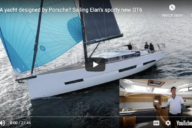Deep ocean explorers, Nekton, have released an immersive 360 virtual reality video enabling viewers, for the first time, to experience a virtual submersible dive to the deepest known point of the ocean – Challenger Deep, a 6.83 mile descent (10,994m/35,069ft¹) into the Marianas Trench in the Pacific Ocean.
Scientists from a dozen marine research institutes are joining the four-week mission launched by the newly founded scientific research charity, Nekton. The research program, based aboard two sea going vessels, is focusing on three locations: Bermuda, Nova Scotia, and the High Seas (NW Atlantic & Sargasso Sea). The scientific findings will be released as part of the XL Catlin Deep Ocean Survey, a pioneering new multi-disciplinary marine research program investigating physical, chemical and biological indicators to assess the function, health and resilience of the deep ocean.
To explore the full impact of human activities on the deep ocean, the expedition is using cutting-edge technology including the latest manned submersibles with fully spherical hulls, remotely operated vehicles and underwater 360 cameras.
The first 360 video delivers a 3D virtual reality, fully immersive experience designed to enable viewers to share similar experiences to Nekton’s co-founder and submersible pilot, Oliver Steeds, who narrates the descent.
Oliver said: “Whilst 12 people have walked on the moon, only three people have been to full ocean depth. People have spent 300 hours on the moon and only 3 hours at full ocean depth. Viewers will experience the descent into the darkest depths of the ocean, and encounter the inhabitants and hundreds of facts about the least known frontier on our planet. Look out for hammerhead sharks, blue whales, sperm whales and the terrifying fangtooth fish.”











